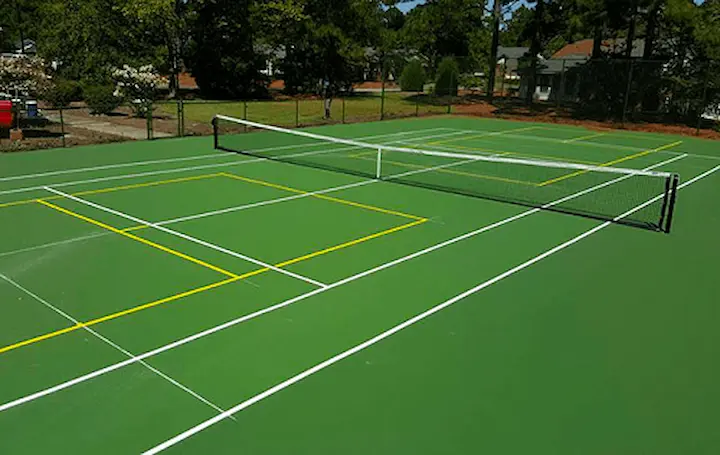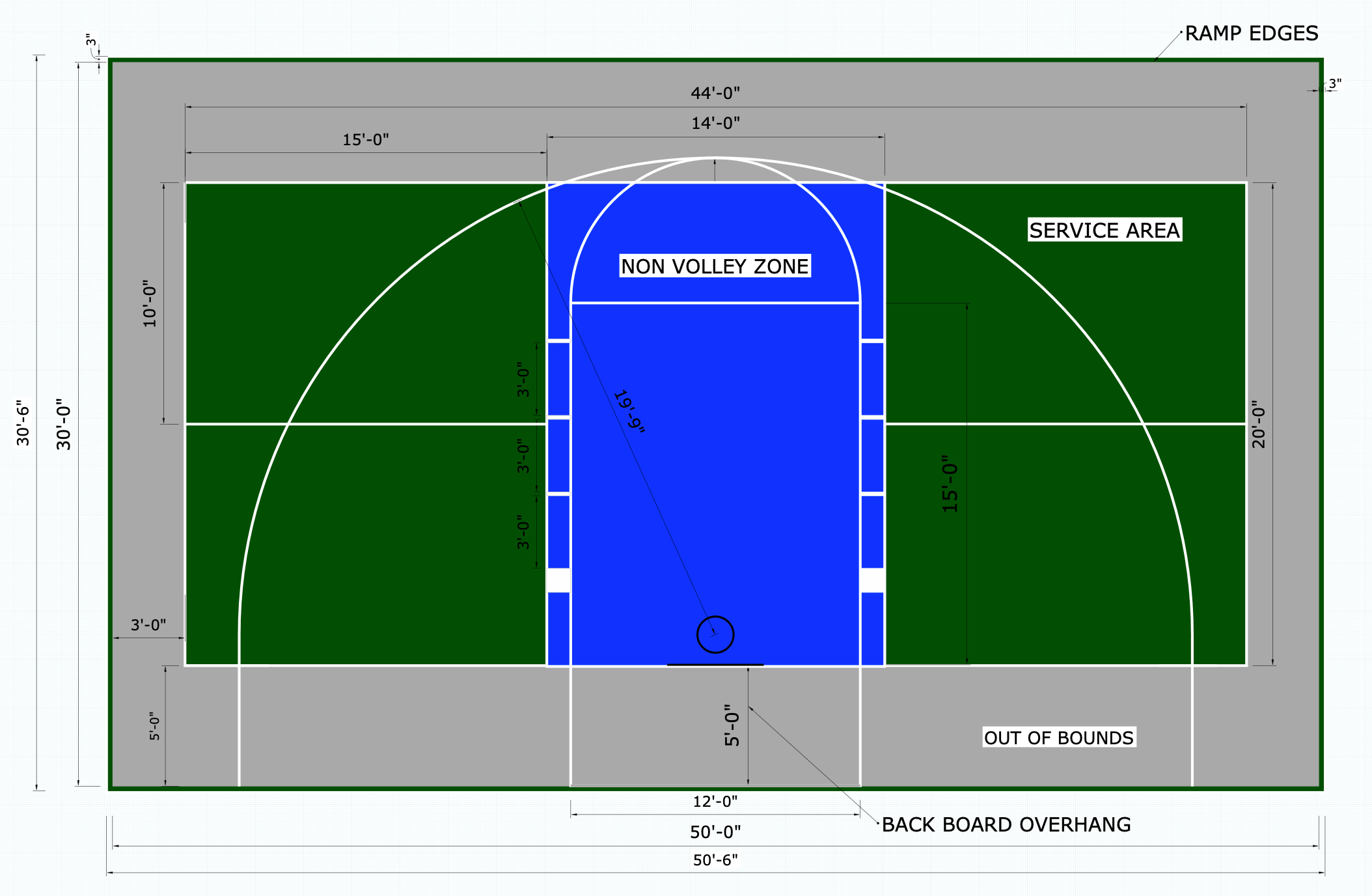Comprehensive Overview to Pickleball Judiciaries Style & Building And Construction in Illinois and Midwest
Comprehensive Overview to Pickleball Judiciaries Style & Building And Construction in Illinois and Midwest
Blog Article
Secret Variables in the Building of Pickleball Judiciaries: From Website Choice to Final Surfaces
The construction of pickleball courts incorporates a variety of critical variables, starting with the choice of a proper website that stabilizes availability with ecological considerations. Essential elements such as court measurements, surface products, and drainage systems significantly impact not only the quality of play but additionally the long life of the facility. Furthermore, attention to lights and ending up touches can raise the total experience for gamers and viewers alike. Recognizing how each of these parts interrelates might reveal understandings that are often overlooked, motivating a closer assessment of ideal techniques in court building and construction.
Website Choice Standards
When starting the construction of pickleball courts, it is important to toenail down the site option requirements that will make sure ideal playability and availability. The location must be quickly reachable for players, preferably positioned near houses or recreation center, to encourage engagement.
Furthermore, the surface ought to be degree and stable, as unequal ground can lead to safety threats and impact gameplay. Ample drain is additionally vital; picking a site with great water overflow will aid preserve court conditions throughout damaging climate.
An additional important consideration is the schedule of energies. Accessibility to power and water is needed for lighting and upkeep objectives. Additionally, proximity to car parking centers is important, helping with simple accessibility for players and viewers alike.
Ecological aspects can not be ignored; natural shade from trees can enhance player convenience, while exposure to prevailing winds may disrupt play. Lastly, zoning laws and neighborhood support need to be taken into consideration to make sure that the task lines up with local guidelines and obtains the backing it requires for effective application. By meticulously reviewing these criteria, stakeholders can produce an inviting and useful setting for pickleball fanatics.
Court Dimensions and Design
To make certain optimum gameplay and adherence to laws, the dimensions and design of pickleball courts have to be thoroughly specified. A conventional pickleball court gauges 20 feet in size and 44 feet in length for both songs and doubles play. The recommended design includes a non-volley zone, commonly referred to as the "kitchen area," expanding 7 feet from the internet on either side. This area is important, as it affects gamer positioning and shot selection - Illinois and midwest.
The net height is established at 36 inches at the sidelines and 34 inches at the facility, developing a mild dip that influences ball trajectory. Court markings are similarly vital; lines must be 2 inches wide and distinctive in color to make sure exposure.
Additionally, a buffer area surrounding the court is suggested, normally extending 5 to 10 feet beyond the sidelines and standards to accommodate players' movements and boost safety and security. Correct layout and measurements not just make sure compliance with official regulations however also boost the total playing experience, accommodating both leisure and affordable play. Cautious preparation in these locations is critical site to the successful building and construction of pickleball courts.
Surface Area Product Options
Picking the best surface area material for pickleball courts is crucial for making sure ideal player efficiency and safety. The choice of surface can significantly influence gameplay, consisting of ball bounce, traction, and player convenience.
There are several choices readily available, each with its distinct features. Asphalt is a prominent selection as a result of its resilience and low maintenance requirements. It gives a solid playing surface that can withstand various weather condition conditions but may call for routine resurfacing.
Concrete is one more extensively utilized material, original site providing superb long life and a smooth surface. It enables for regular round bounce but can be hard on gamers' joints, making it much less desirable for long-term play without appropriate cushioning.
For those seeking enhanced comfort and shock absorption, cushioned acrylic surfaces present a feasible option. These surfaces integrate a base layer with an acrylic overcoat, giving boosted grip and a softer feel, which is helpful for decreasing the danger of injuries.
Last but not least, artificial turf is getting grip, especially for multi-purpose facilities. Its adaptability and reduced upkeep requires make it an eye-catching choice, though it might not provide the exact same ball reaction as conventional hard courts. Careful factor to consider of these options will make sure an optimal playing setting.
Drain and Illumination Considerations
Proper water drainage and reliable lighting are necessary elements in the building and construction of pickleball courts, dramatically influencing both playability and safety. Adequate drain systems prevent water buildup, which can bring about unsafe surface areas and damages to the court framework. A properly designed drain strategy incorporates sloped surfaces and appropriate products to facilitate water flow away from the playing area - Illinois and midwest. This not only maintains the stability of the court yet also minimizes downtime due to bad weather.
Lighting is similarly critical, specifically for courts planned for night use. The placement of lights fixtures ought to be tactically planned to remove darkness and give even circulation of light throughout the court.

Final Surfaces and Upkeep
After addressing drain and lighting considerations, focus transforms to the final coatings and continuous upkeep of pickleball courts. Typical choices include acrylic layers and specialized sports surfaces that provide optimal grip and cushioning.

Seasonal upkeep may consist of resurfacing every few years, depending on usage and ecological factors. Effectively preserving webs, court lines, and surrounding locations is similarly essential to give a secure and satisfying having fun experience. By buying top quality surfaces and sticking to a structured upkeep timetable, facility owners can guarantee their pickleball courts continue to be in outstanding condition for many years to come.
Final Thought
Finally, the successful building and construction of pickleball courts rests on thorough focus to numerous key elements. Site option need to prioritize ease of access and surface stability, while court measurements and format should adhere to optimal standards for gameplay. The option of surface area product dramatically affects player safety and performance. Effective drainage and sufficient lights add to court longevity and exposure. Lastly, quality coatings and a durable upkeep schedule are crucial for protecting the court's problem, boosting the total experience for players and spectators alike.
Report this page